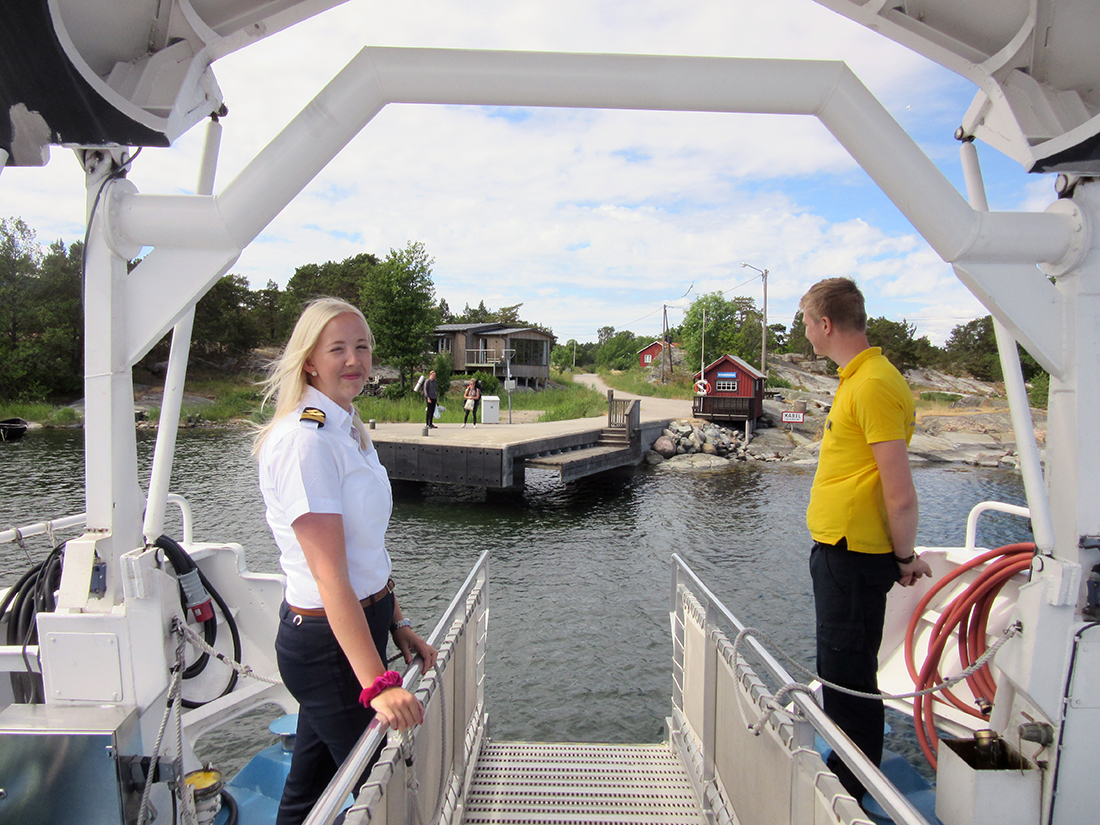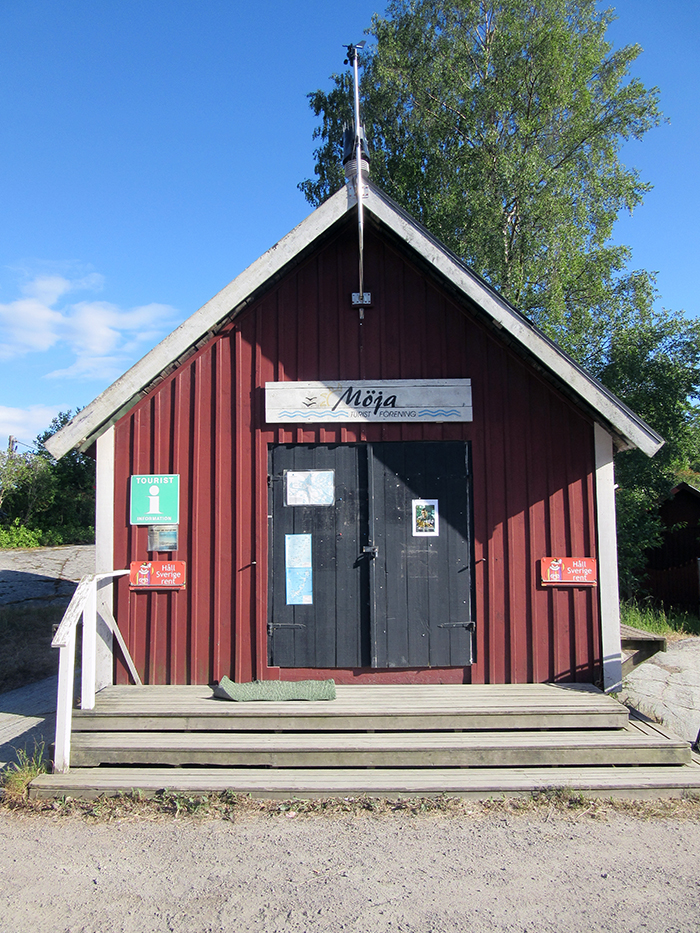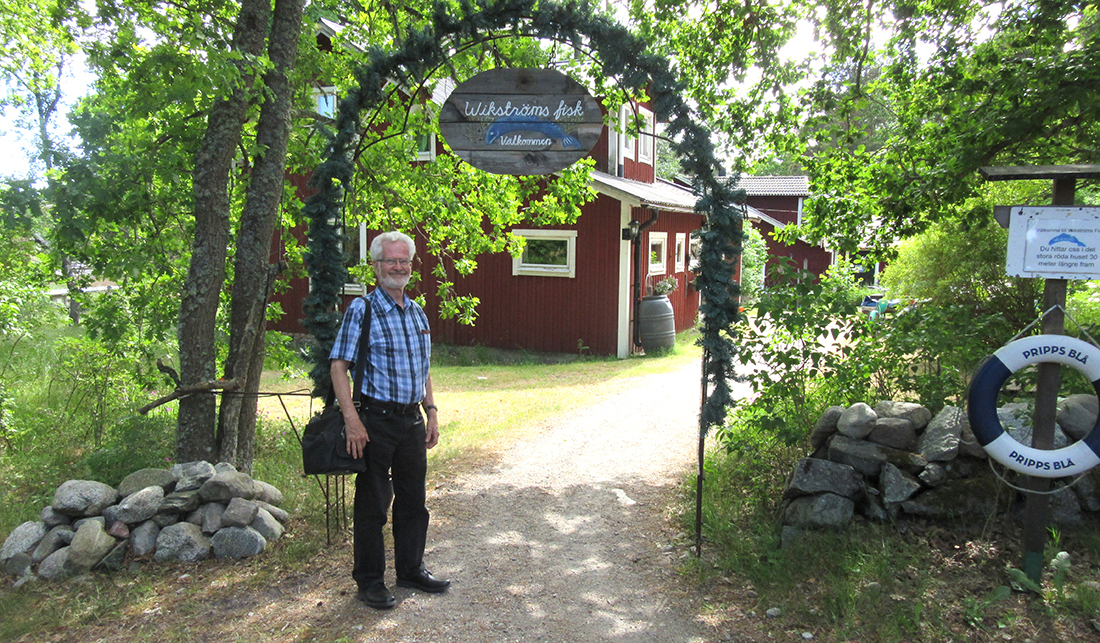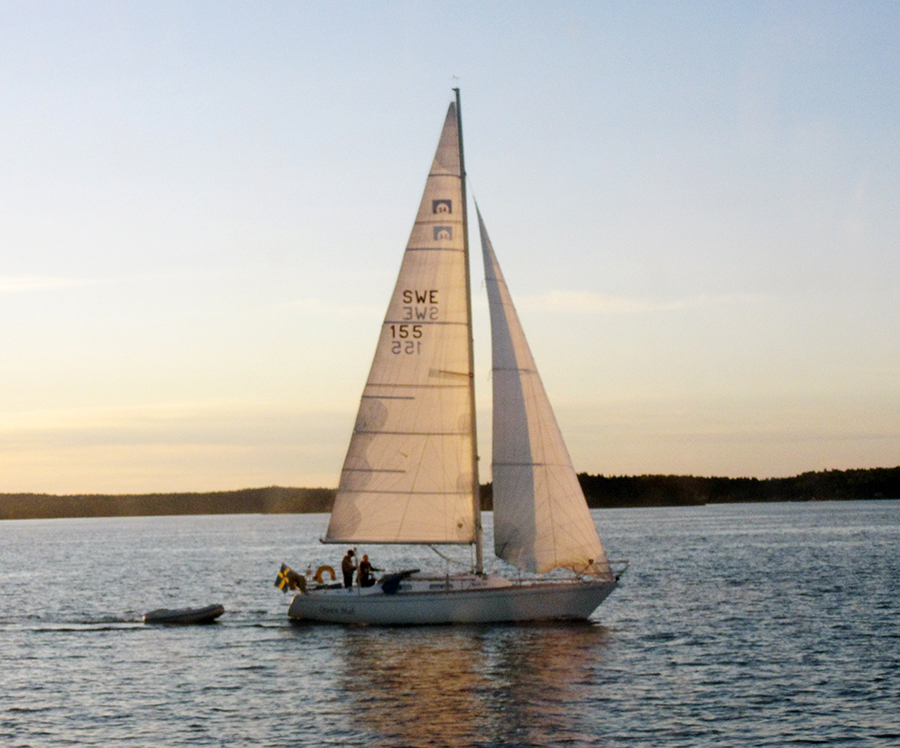The great Moja
A day trip in the northeastern most area of Stockholm archipelago - much closer than you think.
-
 The Cinderella calls at Ramsmora bridge at Möja, in the background is the Roland Svensson Museum.
The Cinderella calls at Ramsmora bridge at Möja, in the background is the Roland Svensson Museum. -
-
Möja, sometimes called Stora (grand or large) Möja, is one of the larger islands of Stockholm's archipelago in the Baltic, located in its northeastern most area. Only a few rocks and islets separate Möja from the open sea. If you continue straight eastward the next land will be Estonia. The south end of Möja is divided by a narrow strait with a ferry that crosses to Södermöja.
Like all the islands without a bridge connection to the mainland, Möja is sparsely populated. In 1780 the island had 254 inhabitants; in the early 20th century, it reached its peak with about 770 residents. Now only 270 people live here permanently, 25 of whom are school aged children. Summertime is a different story, however. Lots of travelers and boaters come here for a day or weekend, staying at bed-and-breakfasts or the youth hostel or on their boats. -
 Möja welcomes you.
Möja welcomes you. -
-
Möja has had a domiciled population since the Viking age. In the 13th century the name of the island was “myghi,” or “muga,” which means mass or elevation, referring to a hill on the island. The whole island burned in 1719 in the so-called Russian ravages. The only building left standing was the small chapel in the village of Berg. In 1769 a new church was built on the same site and got its current look in the 19th century. There are only three islands in the central outer archipelago with their own churches: Sandhamn, Runmarö and Möja.
Life on Möja has been told by artists such as the famous Roland Svensson, songwriter Evert Taube – who got inspiration from Södermöja where he wrote “Dansen på Sunnanö” – and Jules Sylvain, who had a summer place at Byholmen, close to Södermöja. That was before he moved south, according to rumors, to become a banana farmer.
Möja has five villages: Berg, Löka, Ramsmora and Långvik on the east side, and Hamn on the west side. In spite of its name, Hamn - meaning harbor – does not have a bridge for archipelago cruisers or guest boats.
Möja was once famous for its strawberries. Large quantities were shipped from Möja to Stockholm, with the culmination in the 1940s. Today no one grows strawberries commercially. Open meadows have replaced the strawberry fields.
Until the 1990s fishing was the predominant source of income. In older times the fish was transported to markets in Stockholm in rowboats. In cold winters the transports could be done with horse and carriage over the ice. -
 Göran at the Wikströms Fisk restaurant.
Göran at the Wikströms Fisk restaurant. -
21st century Möja
Today only one fisherman remains on Möja. His name is Rune Wikström. Every night he gets the fish that will be served the following day at the family restaurant Wikströms Fisk in Ramsmora. Whatever he gets, strömming (Baltic herring), sik (whitefish), cod, perch or pike, will be on the menu as “Today’s Catch.” His wife Inga-Lill and daughter Stina are the cooks and servers.
My son Niklas and I decided to check out this restaurant. We left at noon from Strandvägen, Stockholm on the “Cinderella.” We got two hours of a sunny boat trip through the beautiful archipelago, passing places and islands such as Vaxholm, Grinda, Viggsö (ABBA’s island), Svartsö, Ingmarsö and Husarö. We approached Möja from the northwest and called at the bridge of Långvik before arriving at our destination, the bridge of Ramsmora.
Wikströms Fisk is located in the woods surrounded by unspoiled countryside, a 10-minute walk from the bridge. We were first welcomed by a goose, then by Stina Wikström. She provided us with herring and a local “nubbe” (schnapps), delicious fried strömming and butter-fried sik. We rounded it up with coffee and a tasty cake. A great dinner. Before leaving the restaurant we saw its Roland Svensson exhibition on the second floor.
Our boat from Möja back to Stockholm did not leave until hours later so we took a walk along country road #694, down to Berg, the main village. This was a 2-mile walk on a dirt road, so narrow that two cars would have trouble passing. But, on Möja there are no cars, at least only very few of them. Instead people go by bike or three-wheeled motorized motorcycles. The day we were there the road was completely empty, no tourists, no activity. The only sound was the song of the blackbirds. This was a weekday in early June with the calm before the Midsummer storm when Stockholmers would invade the archipelago.
We walked through Ramsmora, where the Roland Svensson Museum is located. It was closed. Of course. The next village is Löka, an idyllic place with guest harbor, dance pavilion, boules court, youth hostel and an ostrich farm. Having reached Berg, the center of Möja, with its grocery store, local folklore museum and church, we found the Möja Hamnbar, actually a pizzeria. Open! The beer tasted fantastic after the long walk.
Eventually “Cinderella” arrived at Berg’s bridge, we hopped on board and enjoyed a beautiful sunset on our trip back to Stockholm.
By Göran Rygert -
 The archipelago at sunset.
The archipelago at sunset. -
For more info, see www.wikstromsfisk.com or www.stockholmarchipelago.se/en/
-
-
